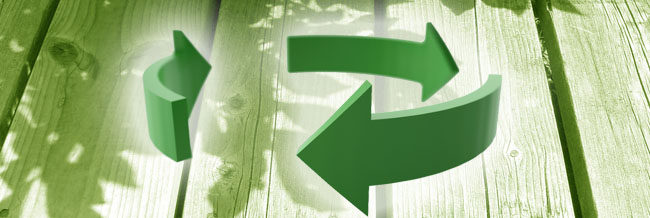A Step-by-Step Guide to Green-Building a Deck
 (BPT)—There are plenty of ways to go green at home—but one of the most impactful methods is outside: green-building a deck.
(BPT)—There are plenty of ways to go green at home—but one of the most impactful methods is outside: green-building a deck.
Whether you plan to install new or refurbish an existing structure, utilizing sustainable materials (and conducting eco-friendly maintenance after the fact) can green your deck, ensuring long-term enjoyment for the members of your household.
To begin green-building your deck, consider your board options. Generally, there are two types of boarding: wood and composite. Wood is a renewable resource; more trees can grow to replace the ones harvested for boards, and when your deck’s usable life ends, you can recycle the wood it was made of.
However, pressure-treated lumber is not recyclable. While the preservatives it’s treated with make it last longer than many types of untreated wood, it’s less eco-friendly in the long run because it must be disposed of, instead of reused. If you prefer a wood deck, look for naturally weather- and pest-resistant wood varieties, like California red wood, western red cedar or ipe.
Composite boards are green, as well, in that many are made from recycled materials, such as reused plastic and reclaimed or recycled wood. Composites tend to last longer than wood, and require no special treatment like staining or sealing. Their longevity can make them a greener choice—but they can’t be recycled.
Wood and composites are also commonly used for railings, but they may not be the most environmentally-friendly option, given the railings’ greater exposure to the elements. Stainless steel cable railing is 100 percent recyclable, and can offer un-obscured views.
If you choose to construct your deck of composites—and add a stainless steel railing—it will require little maintenance. Stainless steel is inherently weather-resistant.
If you opt to build your deck with wood, some types will require regular sealing and staining. Rot- and pest-resistant woods may not need to be sealed, but will weather to a silver-gray color unless you stain them every year.
Bear in mind many stains contain a blend of agents meant to inhibit the growth of fungus or deter pest infestations, and may also contain volatile organic compounds (VOCs). Look for stains and sealers that rely on natural ingredients, such as hemp oil, beeswax, carnauba wax and water.
Source: The Cable Connection Reprinted with permission from RISMedia. ©2016. All rights reserved.
— — —
Home Buyer’s Frequently Asked Questions
Home Seller’s Frequently Asked Questions


